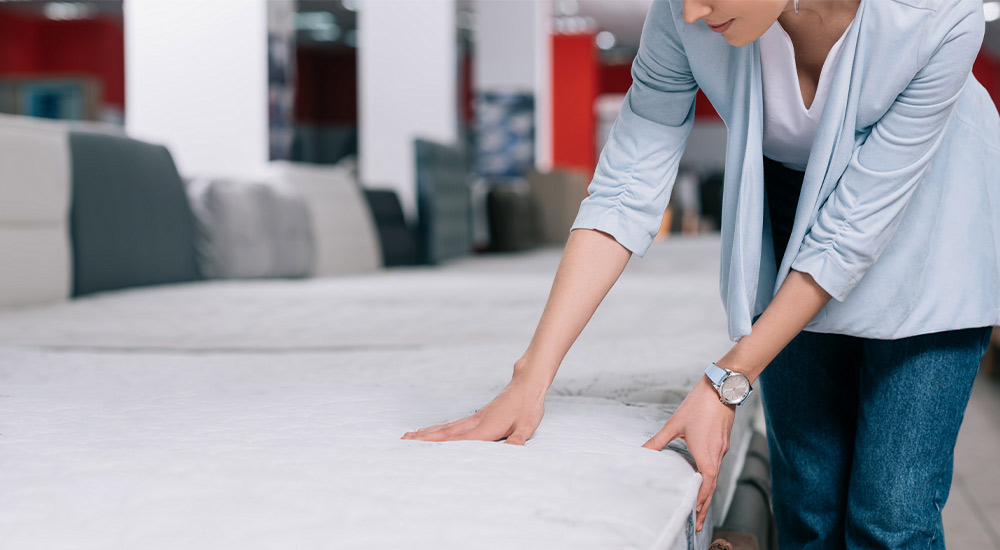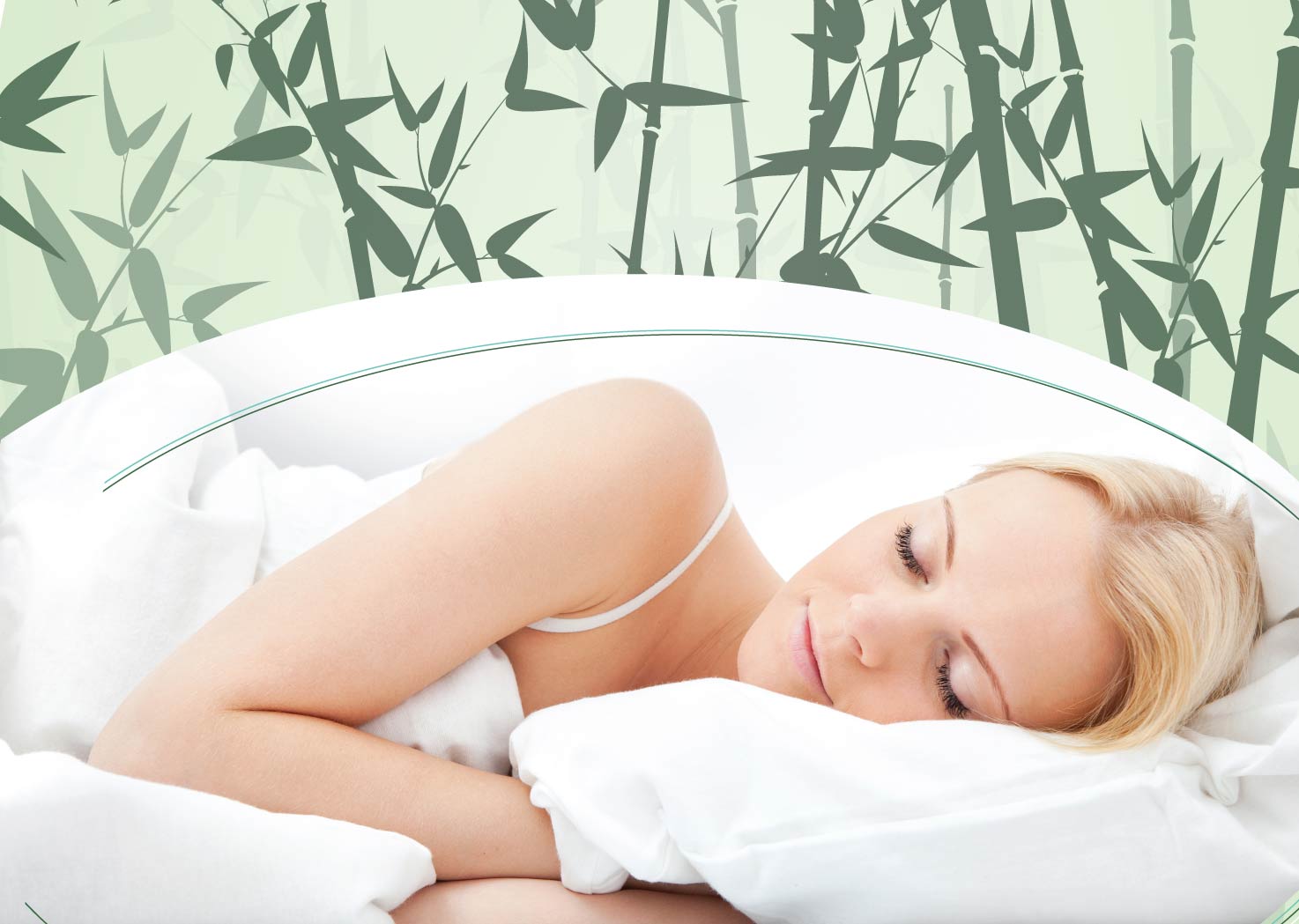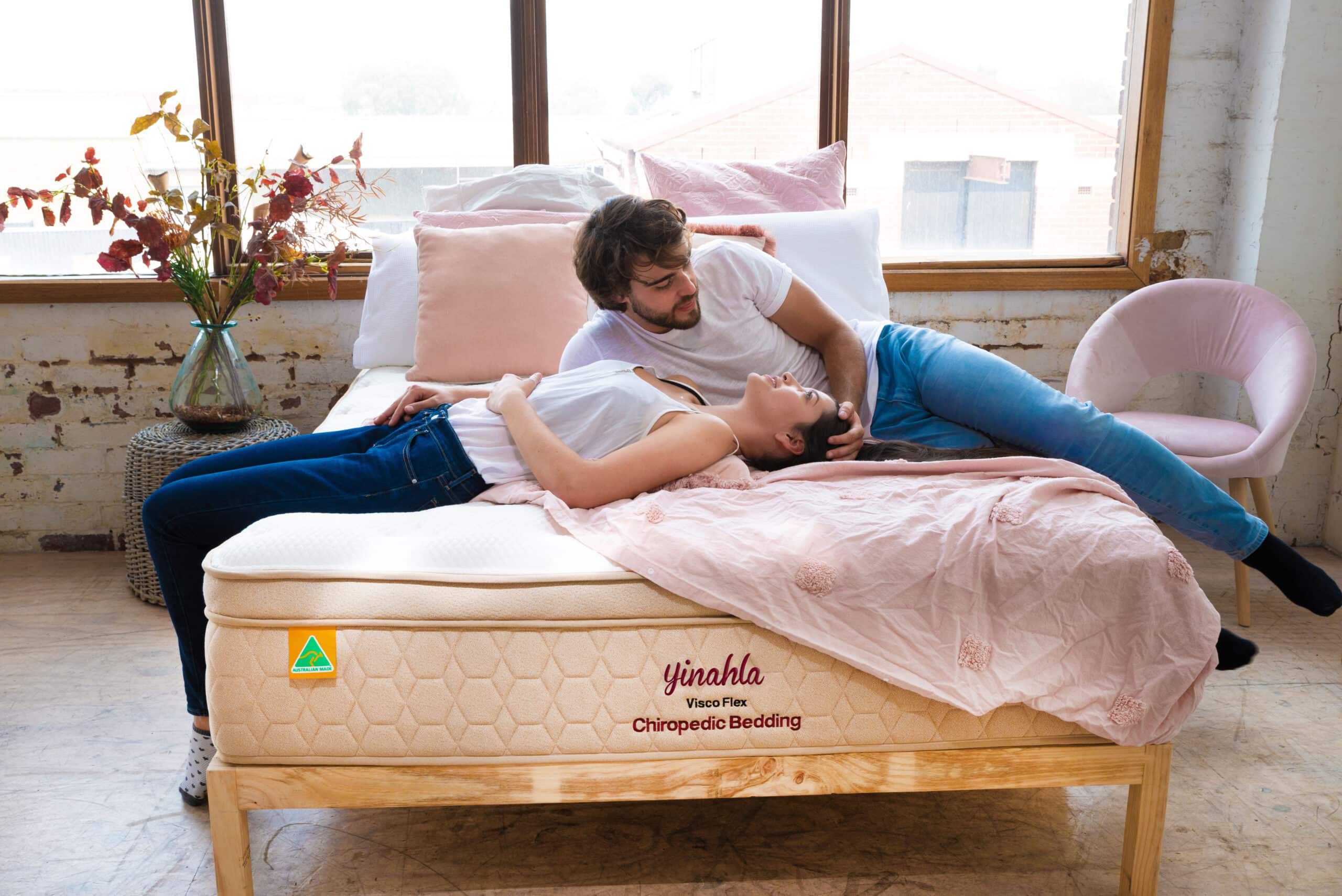You are buying directly from a 100% Australian-owned and operated factory.

The benefits of mattresses without foam

Spring mattresses have been the pinnacle of sleeping technology for a long time, and for a good reason.
Spring mattresses have been giving us a good night’s sleep since the early 1800’s. Since then, industry trends have come and gone, but the trusty spring designed mattress has endured.
As an Australian, family-owned and operated business since 1991, Chiropedic Mattresses has seen more than our fair share of mattress trends come and go. One such trend has been cropping up lately — a foam mattress, easy to transport, squeeze, roll or compress in the boot of your car.
Foam mattresses, in hot demand across Australia, are made from a visco-elastic material. It means the mattress changes shape and reverts to its original form afterwards. Instead of having a traditional, spring-form, bouncy feel, memory foam responds slowly to pressure.
Before rushing out to buy the latest trend you’ll be sleeping on for the next couple of years, here are some of the considerations we think are essential to take into account.
The problem with foam mattresses

While foam mattresses offer some great performance characteristics like density, motion transfer control, and contour; they often have some significant problems, particularly when companies opt for budget materials.
The type of foam used in a memory foam mattress is probably the biggest determiner when it comes to price point and quality. Polyfoam is a common material used in budget memory foam mattresses, but this type of material degrades quickly, leaving you with little support and a sagging mattress.
Similarly, the density of foam materials used in the mattress has a massive impact on the durability and lifespan of a foam mattress.
To top it off, often foam mattresses retain heat and have restricted airflow due to the lack of breathability. This can lead to discomfort at night, especially during hot Australian summers.
The benefits of spring mattresses
Spring mattresses are considered the most traditional type of mattress, with innerspring beds covered by upholstery materials, like fibre or foam. Often, spring mattresses will have zones of coils to suit different pressure points of the body.
The coils create a firm core that won’t sag as quickly as other materials.
What you should put a premium on
Price point vs. durability
The price point of spring mattresses correlate to the expected lifespan and durability of the bed. The most budget-friendly options will last around three to five years, but the more expensive and luxury models, should you be willing to invest, will last up to a decade with proper care.
Coil count
The better spring mattresses will have a higher coil count, layers of coils or zones of coils in order to apply the right pressure to different points of the body. Higher coil counts can provide better support and contouring, so when shopping for your mattress, try to select a mattress with a coil count of at least 400 for a Queen, and 480 for a King.
Coil wire gauge
Coil wire gauge refers to how thick each coil’s wire is within the mattress. As a general rule, low-gauge coils are thinner with a springier, softer feel, and high-gauge coils are thicker with firmer push-back and more durability. But springs with a smaller centre diameter can have a low-gauge wire but provide a firmer feel and are stronger due to the increased coil count in the full spring system.
Other add on’s and layers for comfort
Layers of fabric or gels:
Comfort layers give you the best of both: the support and durability of a spring mattress, and the custom comfort level best suited to you.
- Natural latex layer provides excellent resilience and stops sagging. Latex is also anti-bacterial and anti-microbial, providing a healthier night’s sleep.
- Gel offers you a temperature neutral layer and often cooling effect, great for hot sleepers and extra-comfort during hot summer nights.
- Visco memory foam can help relieve aches and pains overnight, by displacing pressure along the body. That means you’re able to get the comfort of a foam mattress as well as the durability and support of a spring mattress.
Additionally, plush layers of fabrics give your mattress a more luxurious, premium feel. Layers of cotton, wool, and bamboo are some of the other factors to consider.
We can help you find the best spring mattress for you. Visit us in one of our 9 stores across Victoria, or shop for mattresses



